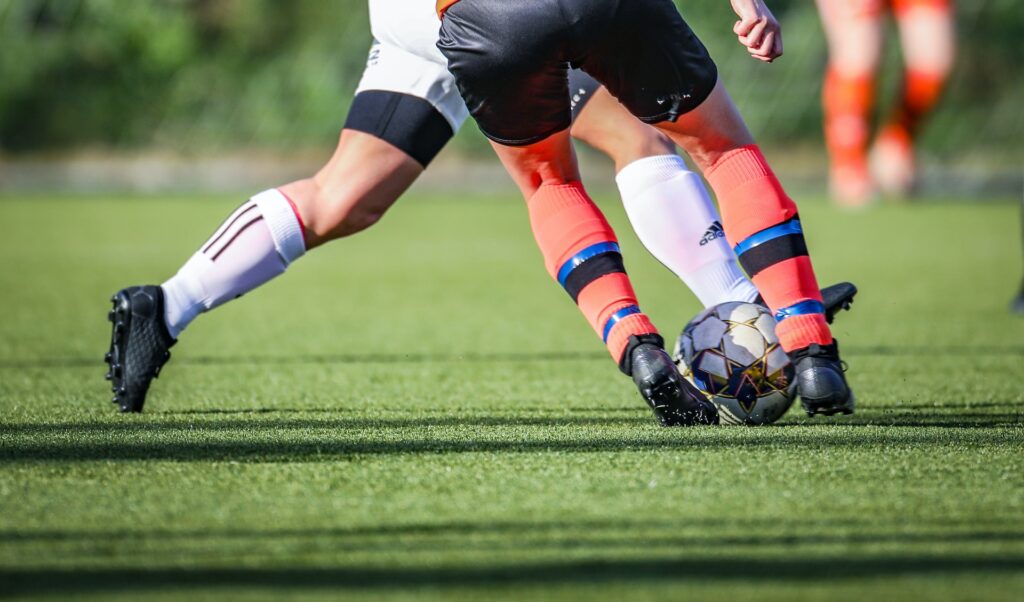Table of Contents
- What is a half back in soccer?
- The history of the half back in soccer
- Is a half back the same as a full back?
- When use a half back in soccer?
- Recap: The half back in soccer explained
The half back in soccer is a role that seemingly died a death sometime in the 1970s. But much to the surprise of many, the half back is on its way back. In this article, we explain what is meant by a half back in soccer, how it’s different from a full back, and when you might deploy a half back in the modern game.
What is a half back in soccer?
A half back in soccer is another term for a defensive midfielder, typically deployed in the central and wide positions on the field. The term was widely used until the 1970s but has fallen out of use in the decades since.
The history of the half back in soccer
To understand the historic role of the half back in soccer, it’s important to look at how soccer teams used to setup. As illustrated brilliantly by Football Bible, soccer formations are very different today than what they were in the late 1800s and early 1900s.
Historically, it wasn’t uncommon for a coach to set up with seven forwards, spread out across the top end of the soccer pitch.
Then, two “half backs” would be employed in the central and wide midfield areas, while a solitary defender would be positioned in front of the goalkeeper.
This 1-2-7 soccer formation was used primarily in the 1860s and 70s, before the offside rule changed the way that soccer teams setup.
Before the outbreak of the Second World War in Europe, many teams on the continent played with a 3-2-2-3 formation, again employing two half backs in the central and wide regions of the midfield.
Again, this was a particularly attacking formation that evolved and changed throughout the remainder of the 20th century.
Key to this formation were the half backs.
The role of the half backs was to sweep up in front of the defenders, playing a similar role that the anchorman now plays in modern-day soccer, although the half back does also have a say in launching attacks.
They provided a solid base from which teams could launch attacks, and given that many teams played with seven forwards, they often had their work cut out!
Is a half back the same as a full back?

No, a half back in soccer isn’t the same as a full back. A full back is a wide defender, employed specifically as part of a defensive unit to play in the wide areas of the field.
Modern-day full backs spend as much time attacking as they do defending and are crucial to the shape of many modern-day soccer teams.
In contrast, the half back plays in the line ahead of the full backs and employs defensive midfield positions. Some coaches use half backs more centrally than others, depending on how they have decided to setup.
If you’re looking for a modern-day comparison, you can regard half backs as defensive midfielders, rather than full backs.
When use a half back in soccer?
The role of the half back is undergoing a renaissance in soccer, having been pretty much dumped by the 1970s. Some coaches are utilising half backs to provide defensive cover and to launch attacks with their attacking qualities.
The redeployment of Trent Alexander Arnold into Liverpool’s midfield can be seen as an attempt by Jurgen Klopp to use half backs in his system.
Like any specific role on a soccer field, be it a trequartista, target man, or poacher, for instance, you need to consider if the deployment of such a role is aligned with your tactical aspirations.
A half back might be useful to you if you’re looking to deploy a central defensive midfielder who can also be effective in the wide positions when called upon.
The bottom line is that half backs are defense-minded players and even though the role isn’t commonly used, there are signs that it could be making a comeback in the modern game.
Recap: The half back in soccer explained
A half back in soccer is basically a defensive midfielder who offers cover to the defense while looking to build attacks.
The role was used back at the very start of soccer as a sport in the 1860s, and although it seemed to die out in the 1970s, it could be making a comeback.
So, feel free to employ a half back at the base of your midfield, as the role can be a useful springboard for launching attacks while offering defensive cover.

